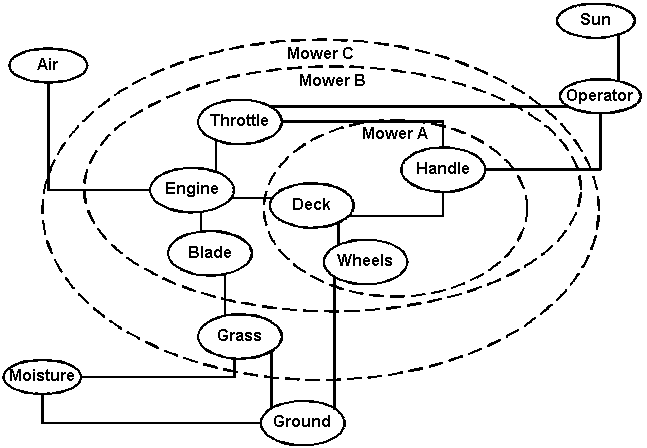But systems engineers do it all the time. One job of the systems engineer is to establish the boundaries of a system.
First of all, if no boundaries are established then how do you know if the system is complete? You cannot.
If the boundaries are not clear, then there will be no end to the turf wars that ensue when the system fails. For example; suppose you cannot access the information superhighway from your computer. If the trouble is in the modem, you call the cable company or the phone company. If the server is down you call the ISP. If itís a faulty router you call the IT person. What if your system doesnít have clear boundaries? You donít know who to call.
If the boundaries are too inclusive (it tries to do too much) then the system will exceed the budget.
If the boundaries are too constrained then why bother? The system does not do anything.
What if the lawn mower maker tried to define the grass to be part of his lawn mower. He would have to take responsibility for many aspects of your yard that you would not expect. Like keeping your grass growing when you over fertilize. This of course is absurd. But it is a natural consequence of defining the boundaries wrong.
How would the definition of the lawn mower change if we moved the boundaries among A, B and C.
 Just as crazy things have happened when more complicated systems are designed.
Just as crazy things have happened when more complicated systems are designed.
The system engineer helps everyone to know what the consequences of particular boundaries will be. If the boundary is here then the system will cost X dollars or if over there then Y dollars. In the next section we will take up with what is outside the system with a little diversion about boundaries in general.
Back | Next | Environment